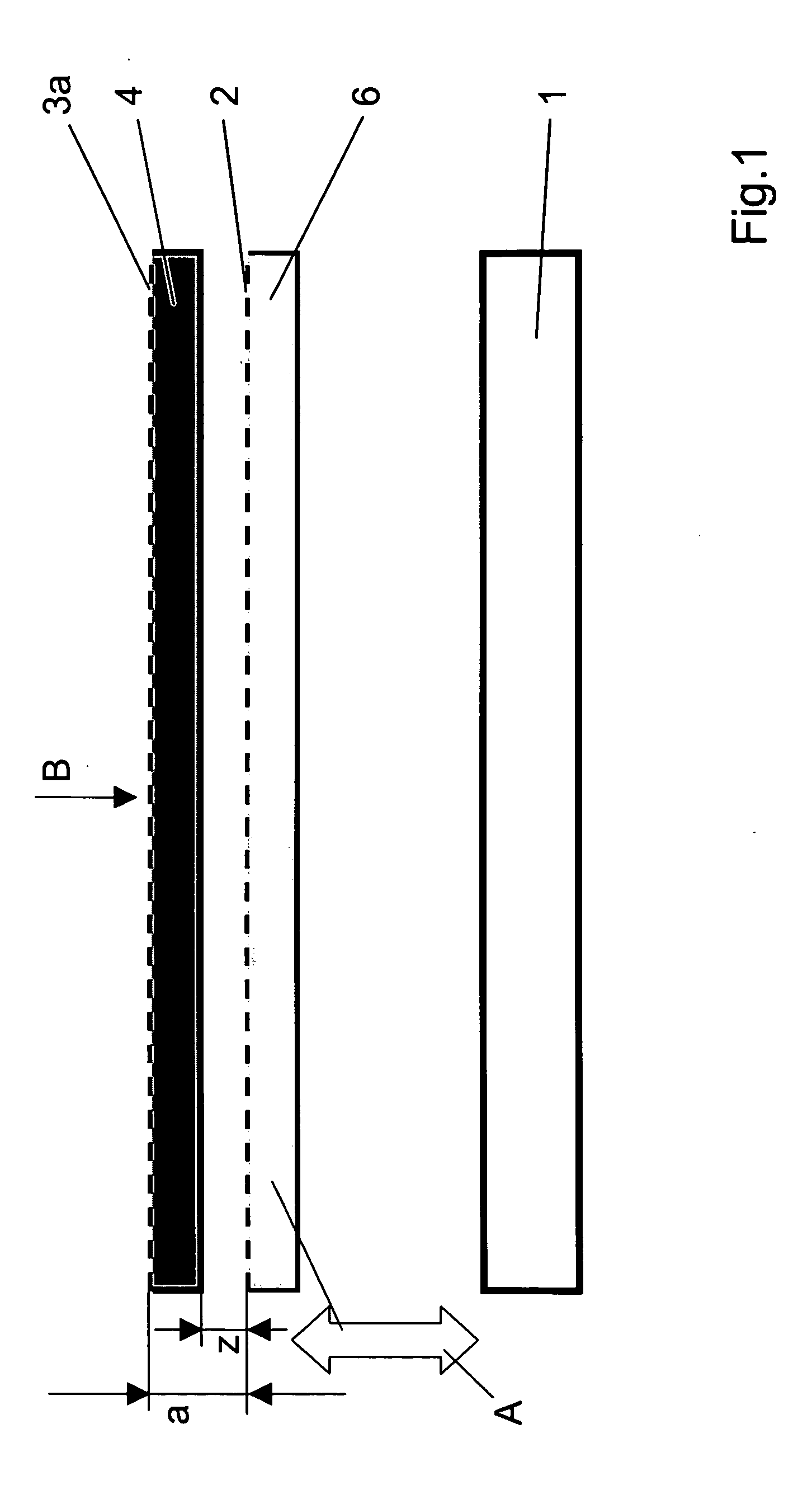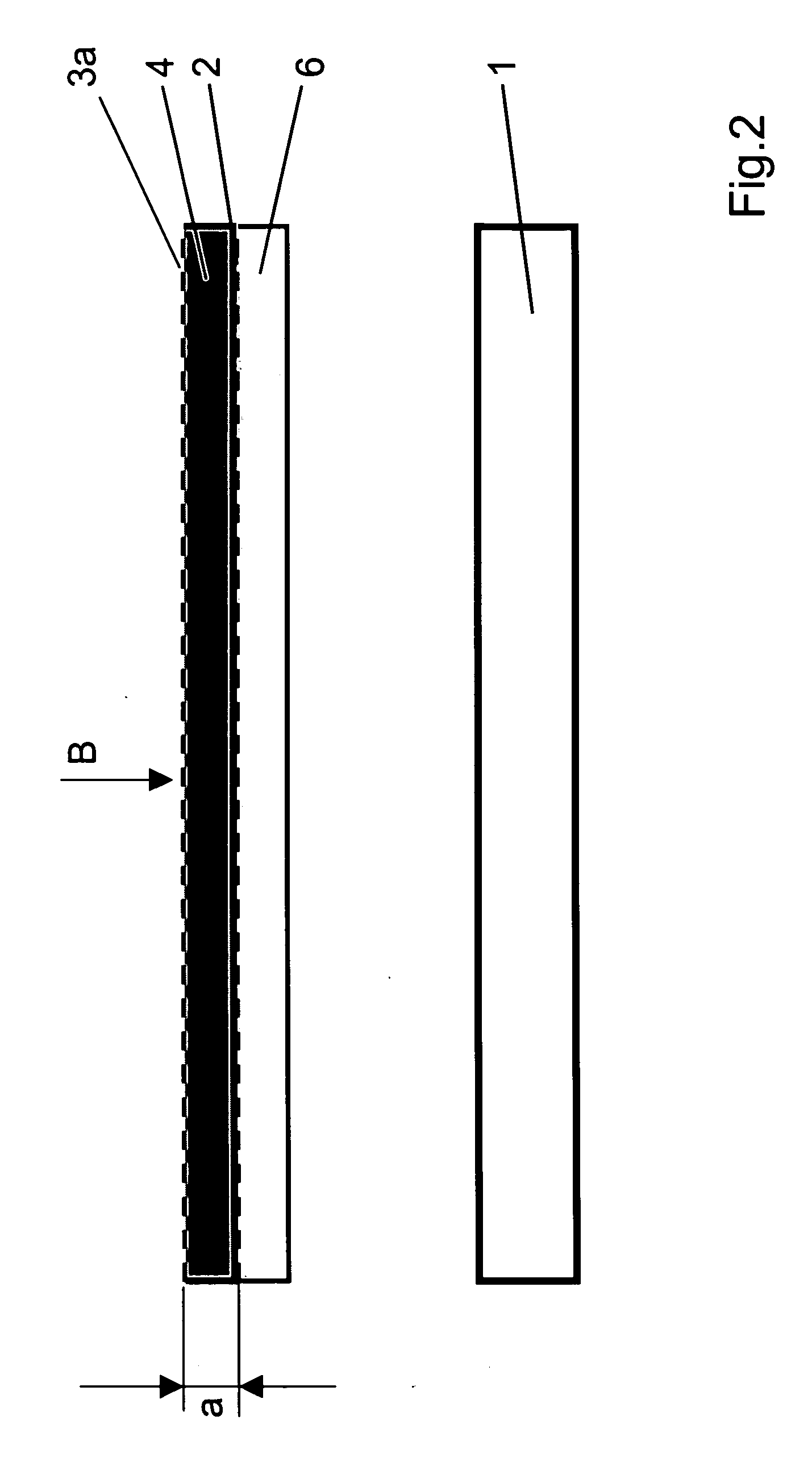Arrangement for two-or three-dimensional display
- Summary
- Abstract
- Description
- Claims
- Application Information
AI Technical Summary
Benefits of technology
Problems solved by technology
Method used
Image
Examples
second embodiment
[0067]FIG. 4 is a sketch illustrating the principle of the arrangement according to the invention in a second embodiment version,
[0068]FIG. 5 is a sketch illustrating the principle of the embodiment version according to FIG. 4 in the second position,
[0069]FIG. 6 is a sketch illustrating the principle of the embodiment version according to FIG. 4 in the first position,
third embodiment
[0070]FIG. 7 is a sketch illustrating the principle of the arrangement according to the invention in a third embodiment version,
[0071]FIG. 8 is a sketch illustrating the principle of the embodiment version according to FIG. 7 in the second position,
[0072]FIG. 9 is a sketch illustrating the principle of the embodiment version according to FIG. 7 in the first position,
fourth embodiment
[0073]FIG. 10 is a sketch illustrating the principle of the arrangement according to the invention in a fourth embodiment version,
PUM
 Login to View More
Login to View More Abstract
Description
Claims
Application Information
 Login to View More
Login to View More - R&D
- Intellectual Property
- Life Sciences
- Materials
- Tech Scout
- Unparalleled Data Quality
- Higher Quality Content
- 60% Fewer Hallucinations
Browse by: Latest US Patents, China's latest patents, Technical Efficacy Thesaurus, Application Domain, Technology Topic, Popular Technical Reports.
© 2025 PatSnap. All rights reserved.Legal|Privacy policy|Modern Slavery Act Transparency Statement|Sitemap|About US| Contact US: help@patsnap.com



